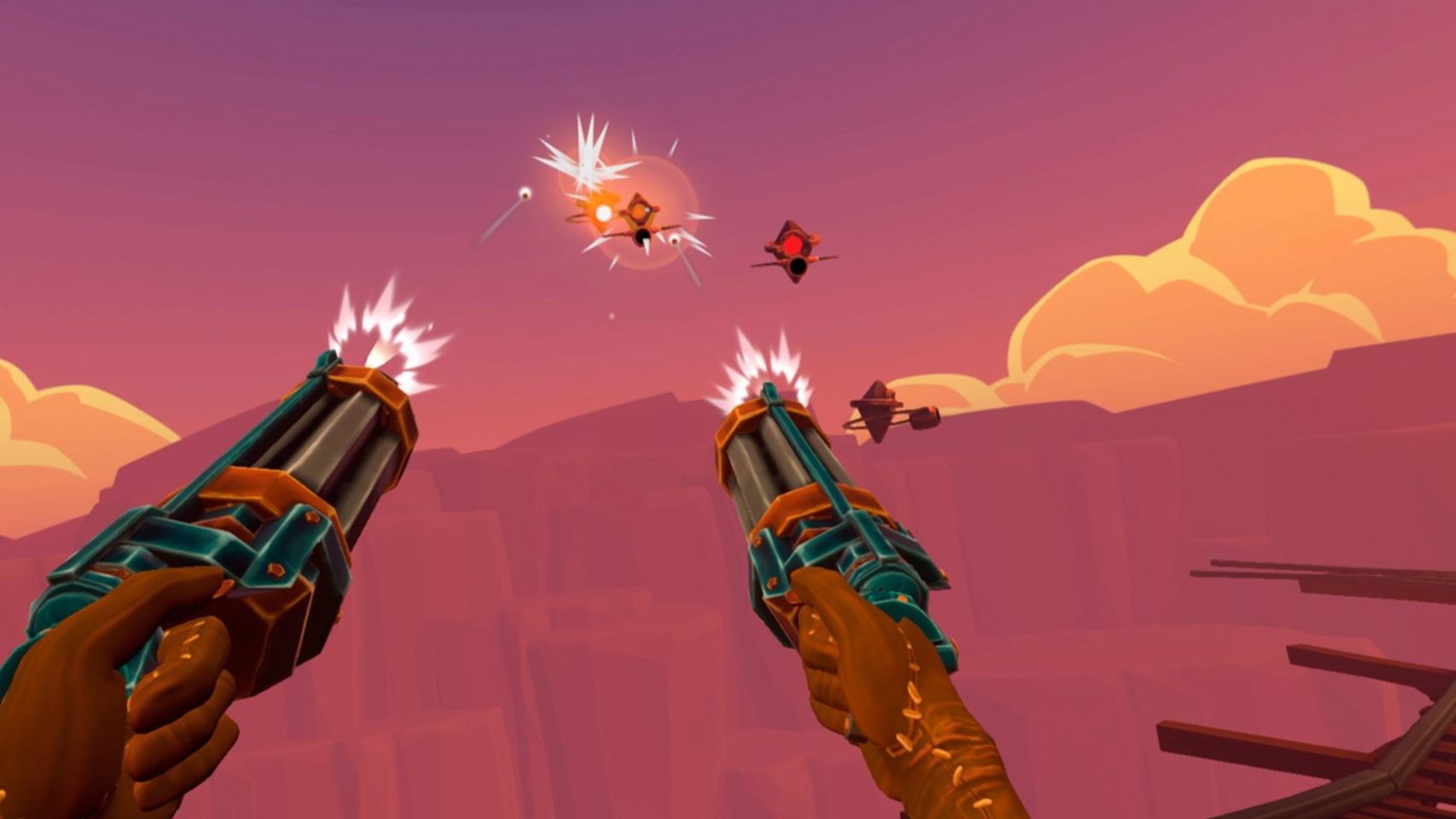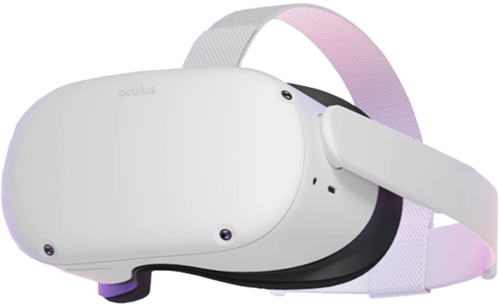Finger Gun preview: Suffering from the Meta Quest 2's hampered hand tracking
Don't pull the trigger just yet.

Finger Gun prides itself on being the first game to answer the question, "What if making a finger gun let you shoot bullets from your fingertips?" Playing it made me ask if a game should let you do that. That's not because I don't think it sounds fun, but Finger Gun is held back by hand-tracking technology that isn't yet up-to-snuff.
Finger Gun didn't feel much different than most other shooters on Quest beyond its initially satisfying hook. Its rootin'-tootin' Old-West-presentation is comically bent around its core gameplay loop: shooting steampunk robots with your fingers. Which often leads to cheeky visual gags and writing bits that warrant a chuckle, like enemy robots occasionally wearing bowler hats, or a wise crack made at your expense by the mad-scientist-meets-prospector who gives you the tools to blast the bots.
Hand tracking on the Quest 2 is still in a pretty experimental state; even in ideal conditions, there's no promise that everything will work smoothly. Unfortunately, some games and pieces of software work better than others — and Finger Gun is one of the unlucky others.
Playing in a fully lit room (three lamps, an overhead light, open blinds, and lights in nearby rooms on) yielded poor results. At least half an hour of my experience with Finger Gun was spent trying to get the game to actually work. Other rooms delivered even more frustrating results. Stopping gameplay to duck out of the guardian and reset the hand tracking every two-to-three minutes certainly wasn't the ideal way to play.
Finger Gun's sub-par hand tracking functionality could be a side-effect of the way it asks players to use their hands to play. Where some of the Quest 2's other hand-tracking-reliant games usually task players with moving their hands and fingers to play air guitar, for example, Finger Gun asks players to only move their thumbs to shoot and their hands to aim.
This means that most of your fingers will largely remain still and clenched into your palm for most of the duration of gameplay. I've never worked with the Quest's hand tracking behind the scenes, but considering the Quest is trying to track a static, unnaturally posed hand, it might have trouble registering it as an actual hand.

You also have a grappling hook that you use by thrusting forward an open palm to grab power-ups in-game, or grapple around your home base after a run. In-between rounds, you'll also be able to move your hands from the uncomfortable position to get new power-ups to help you take on the next wave of enemies. Unsurprisingly, this is when hand tracking works best.
Get the latest news from Android Central, your trusted companion in the world of Android
Hand-tracking also works best when your hands are held up close to and in front of the headset. This tends to conflict with the mechanics of a shooter, especially one in VR. Most VR shooters that use a controller feature a sight, laser, or another method to assist in aiming because they know you're looking at your target rather than your gun. Finger Gun requires you to be looking at both, but because you have two guns, you're likely to find yourself making uncomfortable, robotic movements to accommodate dodging and shooting at the same time.
Not only is this uncomfortable, but the lack of laser sights or the like means that you need to shoot in an enemy's general direction and rely on the game to curve your bullets toward an enemy. Beyond the dissatisfaction that comes with low accuracy and seemingly unearned reward, it feels like a band aid for a mechanic that didn't pan out right.

Technological constraints don't just hamper the would-be shooting gallery's best parts, but it feels like they're holding back the gameplay's depth. For example, instead of a reload, your finger gun have a cooldown. With more advanced hand-tracking, I could see mechanics like an active reload of some kind or a larger playing field adding a new layer of depth to the gameplay. Unfortunately, it seems like the Quest 2 just can't keep up.
Finger Gun is a testament to why the Quest 2's hand-tracking needs some work, more than it is a bad game in itself. Sure, Meta's promised that project Cambria — the more powerful Quest refresh that promises better real-world integration thanks to some better cameras — will make AR and hand-tracking-intensive software work better, but it's still frustrating to see games released under the assumption that Meta's hand-tracking works, only to be kneecapped by the Quest 2's half-baked hand-tracking tech.
Finger Gun still has its issues. Its gameplay doesn't offer much in the way of evolution or progression beyond its limiting power-up system, and its boss fights drag, but it feels hard to pass any judgment on the game's design and mechanics when the system it's built on just doesn't work. I want to give Finger Gun another shot, just not on the current Quest 2 model.

The Quest 2's hand tracking may still need some work, but that doesn't take away from its stellar library of games. There's a reason it's been our favorite VR headset since it launched.

Charlie's a freelance contributor at Android Central from Milwaukee, WI.
